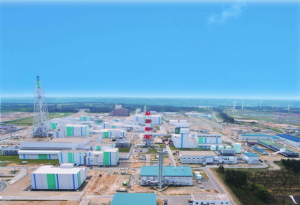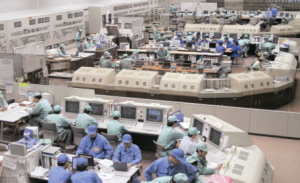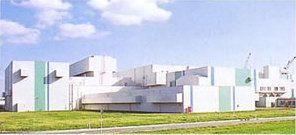|
Once such fossil fuels as petroleum
and natural gas are burned, these fuels can no longer be used. Conversely,
uranium fuel continues burning for three to four years and can be used
repeatedly through reprocessing. The nuclear fuel used for a Nuclear power plant
contains residual (unburned) uranium and newly produced plutonium.
For
example, when U-235 of 3% enrichment is used as nuclear fuel, the nuclear fuel
after power generation will contain 1% residual (unburned) U-235 and 1% newly
produced plutonium. The spent fuel is chemically processed at the reprocessing
plant for use as new fuel. Recoverd uranium and plutonium are mixed with natural
uranium or residual uranium (depleted uranium) after enrichment and fabricated
into MOX fuels or Mixed uranium-plutonium Oxide. In the light-water reactor used
in many nuclear power stations, energy is primarily obtained from U-235. Thus,
the reprocessing plant may be considered "a site where semi-national energy
resources are created."
Such reprocessing can double the
uranium utilization efficiency in a light-water reactor. Moreover, the use of
plutonium for fast breeder reactors offers excellent plutonium conversion
efficiency, and is expected to significantly improve the utilization efficiency
by a factor of about 60 in the future.
|
The Reprocessing Plant is now under final commissioning test. We confirm
safety quality and stability quality of the plant equipment with using
spent fuels at this final stage.
The maximum reprocessing capacity of the plant is 800tons U/year, enough
to reprocess the spent fuel produced from 40 reactors at 1,000 MW-class
nuclear power plants. That is nearly equal to 80% of annual spent fuel
generation in Japan.
The unique feature in this plant is uranium-plutonium co-denitration process.
Owing to this process, the plant does not produce plutonium as a single
element, which has considerable advantages for non-proliferation. Operations
at all reprocessing facilities, located separately, are controlled and
monitored at the central control room. The mainframe computer and central control board enables
efficient operation.
|

Entire construction site |

Central control room |
Spent fuel contained in transportation cask is shipped from nuclear power
stations. These casks are temporarily stored in the storage area and then sent
to the spent fuel storage building. The entire process of removing spent fuel
from a cask to storage pools are performed under water.
|

Spent fuel storage building
|
|

